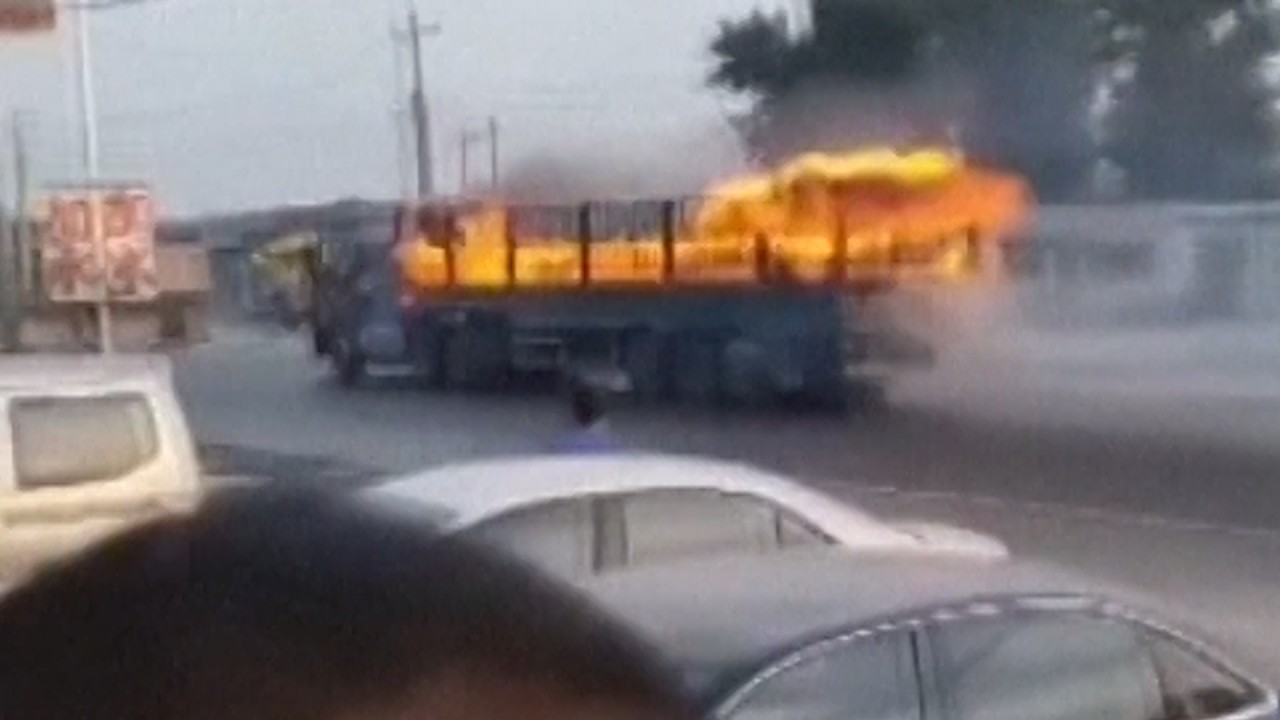
China’s truck drivers still have a long road to post-coronavirus recovery
- Compared to the industrial sector and larger state firms, China’s small businesses were particularly hard hit by the pandemic last year
- That has filtered through to the nation’s army of truck drivers, with many waiting for payment from indebted small firms
As rain beat down on his truck, Zhang Liang dozed in his cab at a rest stop in Shenzhen after a gruelling 36-hour drive from the central Chinese province of Hubei. After a quick nap, the Hubei native will turn around and pilot his 49-tonne truck 2,500km home again.
The journey is normally a job for two people, but Zhang says a co-driver is now unaffordable after a year of financial turmoil in which his income had fallen, unpaid bills had begun to stack up and his personal debts had grown.
“I think most people I know suffered from shrinking incomes and local small and medium-sized enterprises [SMEs] had very serious debt problems,” Zhang said by phone.
“SMEs were cash-strapped and unable to pay their suppliers’ logistics companies, and we drivers are being back paid by the logistics companies.”
A recent study led by Tsinghua University professor Liao Li found the rate of small business closures in China in 2020 almost tripled to 18.5 per cent compared to a year earlier, based on a sample of more than 50,000 companies nationwide.
According to a separate report by the Chinese Academy of Social Sciences and business registration information platform Qichacha.com, more than 10 million businesses were dissolved or deregistered last year, an increase of 18.6 per cent from 2019.
Chinese SMEs have limited ability to deal with risk because they face a number of disadvantages, including lack of access to affordable financing and less competitive products, said Yang Senping, head of the Institute of Finance and Taxation at Jinan University.
So many ordinary people had to take on new debts from various lending platforms last year
“Taxes and fees are still heavy for SMEs; that’s another key difficulty behind the uneven recovery for SMEs,” said Yang, who is also a member of Guangdong’s Chinese People’s Political Consultative Conference.
The economic toll has been particularly severe for SMEs and workers in Hubei, the initial epicentre of the pandemic, which was placed under months of lockdowns to contain the virus.
“Even a long time after lockdowns lifted, so many Hubei natives still had to rely on odd jobs, with no stable income to cover living costs and various loans,” Zhang said. “So many ordinary people had to take on new debts from various lending platforms last year.”

04:37
Chinese driver turns truck into ‘magic kitchen’
Between March and November last year, short-term loans among Chinese households ballooned to 2.37 trillion yuan (US$364.4 billion), much higher than in the same period a year earlier, according to a study released by Institute for Advanced Research of Shanghai University of Finance and Economics.
Zhang said he was still waiting on seven months of back pay worth more than 30,000 yuan from a chemical factory. Meanwhile, freight rates continued to drop last year, he added.
“A driver could earn about 17,000 yuan for a 2,500km round trip between Wuhan in central China and Shenzhen in 2018, 15,000 yuan in 2019, but only about 13,000 yuan now,” Zhang said.
That left him only about 3,500 yuan per trip after fuel and tolls, but most of that would go to paying off truck loans.

01:33
Heroic Chinese driver steers his burning truck from crowded area before it explodes
Most Chinese truck drivers work up to 12 hours a day and more than 70 per cent who own their own vehicles cannot afford to employ a relief driver, according to a 2018 study from the Social Sciences Academic Press, a publishing house under the Chinese Academy of Social Sciences.
Still, the situation in Hubei had improved markedly since a year ago, Zhang said.
The stress of pandemic lockdowns drove his mother in law into depression last year, while his cousin, who was looking for work in southwest China, could not find employment for months due to the discrimination he faced because he was from Hubei.
“As natives of Hubei, we suffered a lot last year but we ordinary people could only choose to endure,” Zhang said.
“Forgetting and letting it go are the easiest and correct things to do.
“Hopefully, business will be better this year and we could all pay off more debt.”

